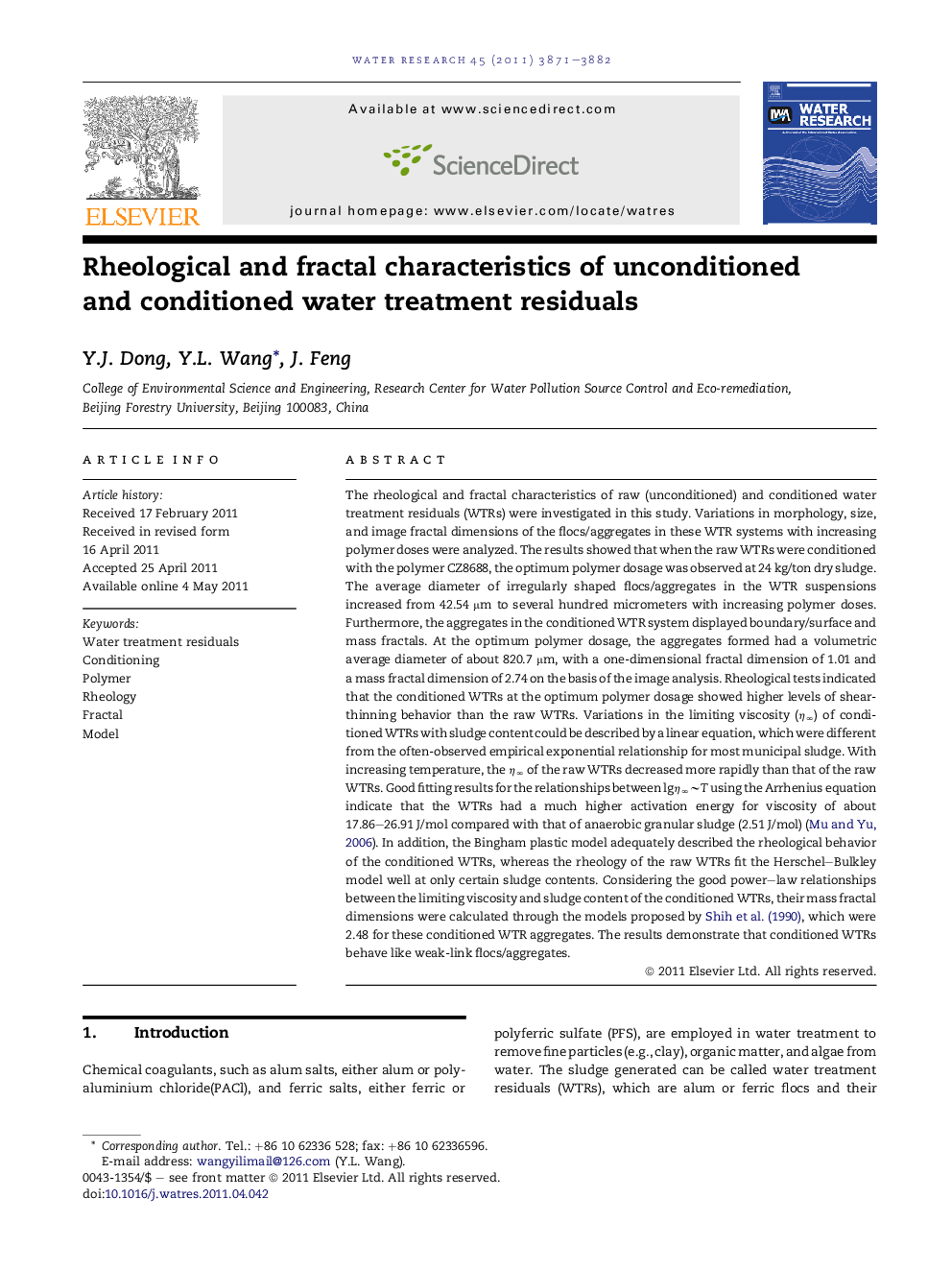| کد مقاله | کد نشریه | سال انتشار | مقاله انگلیسی | نسخه تمام متن |
|---|---|---|---|---|
| 4484086 | 1316909 | 2011 | 12 صفحه PDF | دانلود رایگان |

The rheological and fractal characteristics of raw (unconditioned) and conditioned water treatment residuals (WTRs) were investigated in this study. Variations in morphology, size, and image fractal dimensions of the flocs/aggregates in these WTR systems with increasing polymer doses were analyzed. The results showed that when the raw WTRs were conditioned with the polymer CZ8688, the optimum polymer dosage was observed at 24 kg/ton dry sludge. The average diameter of irregularly shaped flocs/aggregates in the WTR suspensions increased from 42.54 μm to several hundred micrometers with increasing polymer doses. Furthermore, the aggregates in the conditioned WTR system displayed boundary/surface and mass fractals. At the optimum polymer dosage, the aggregates formed had a volumetric average diameter of about 820.7 μm, with a one-dimensional fractal dimension of 1.01 and a mass fractal dimension of 2.74 on the basis of the image analysis. Rheological tests indicated that the conditioned WTRs at the optimum polymer dosage showed higher levels of shear-thinning behavior than the raw WTRs. Variations in the limiting viscosity (η∞) of conditioned WTRs with sludge content could be described by a linear equation, which were different from the often-observed empirical exponential relationship for most municipal sludge. With increasing temperature, the η∞ of the raw WTRs decreased more rapidly than that of the raw WTRs. Good fitting results for the relationships between lgη∞∼T using the Arrhenius equation indicate that the WTRs had a much higher activation energy for viscosity of about 17.86–26.91 J/mol compared with that of anaerobic granular sludge (2.51 J/mol) ( Mu and Yu, 2006). In addition, the Bingham plastic model adequately described the rheological behavior of the conditioned WTRs, whereas the rheology of the raw WTRs fit the Herschel–Bulkley model well at only certain sludge contents. Considering the good power–law relationships between the limiting viscosity and sludge content of the conditioned WTRs, their mass fractal dimensions were calculated through the models proposed by Shih et al. (1990), which were 2.48 for these conditioned WTR aggregates. The results demonstrate that conditioned WTRs behave like weak-link flocs/aggregates.
► The limiting viscosity (η∞) of raw and conditioned WTRs changes with TS, T in specific models.
► The aggregates in the conditioned WTR system displayed boundary/surface and mass fractals.
► The raw WTR flocs were formed by cluster–cluster aggregation.
► Both raw and conditioned WTRs behave like weak-link flocs/aggregates.
► Conditioning caused WTR aggregates to become more compact and dense, and decreased their η∞values.
Journal: Water Research - Volume 45, Issue 13, July 2011, Pages 3871–3882